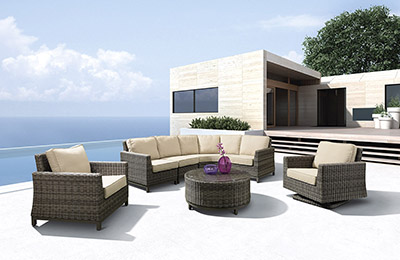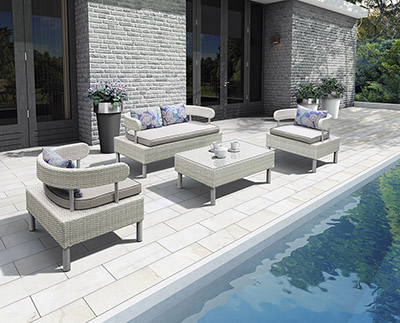Stadiums are major gathering places for thousands of people, making them high-risk environments that require robust security and communication systems. Ensuring the safety of spectators, athletes, and staff is a top priority. From preventing fires and riots to managing potential terrorist threats, stadiums must implement comprehensive measures to safeguard all individuals within their premises. These challenges extend beyond the stadium itself—spectators waiting to enter or exiting after events also face similar risks. Therefore, maintaining a high level of security and communication is essential in every aspect of stadium operations.
In addition to physical security, stadiums must also provide efficient audio solutions to ensure that all attendees can clearly hear announcements, live commentary, or performances. Whether it’s a football match, concert, or large-scale event, sound systems must be designed to deliver high-quality audio coverage across the entire venue. This includes not only amplifying speech but also ensuring that music and other audio content are evenly distributed, creating an immersive experience for everyone present.
Modern stadiums often serve multiple purposes, hosting sports events, concerts, and cultural activities. This versatility introduces unique challenges, such as managing different acoustic requirements and ensuring that sound systems can adapt to various scenarios. A well-designed sound reinforcement system should support both fixed installations and mobile setups, allowing flexibility for different types of events.
When it comes to speaker placement, both centralized and decentralized configurations have their advantages. Centralized systems are often used in indoor venues where reverberation can be controlled, while decentralized setups are more common in outdoor or large open spaces. Each approach has its own set of considerations, including sound coverage, control capabilities, and the ability to minimize unwanted reflections.
Noise levels inside stadiums can be extremely high, especially during peak moments like applause or chants. To maintain clarity, many systems incorporate background noise detection and automatic gain adjustment. This helps ensure that announcements remain intelligible even in the loudest environments. Additionally, directional microphones and signal processors are used to enhance speech clarity and reduce feedback issues.
Communication is another critical component of stadium operations. A reliable intercom system allows staff, technicians, and management to coordinate effectively, ensuring smooth event execution. Whether it's directing fans, managing lighting and sound, or responding to emergencies, clear and timely communication is key.
Security systems play a vital role in protecting both people and property. Video surveillance, access control, and alarm systems work together to monitor activity, prevent unauthorized access, and detect potential threats. Intelligent video analytics further enhance security by identifying suspicious behavior and triggering alerts when necessary.
Integrating all these systems into a unified platform improves efficiency and response times. A centralized control system enables operators to monitor and manage security, communications, and building automation from a single interface. This integration ensures that emergency protocols, such as evacuations or fire alarms, can be executed swiftly and effectively.
Public address and emergency voice systems are crucial for informing the public during crises. Clear and timely communication can prevent panic and guide people to safety. These systems must be reliable, scalable, and capable of delivering messages to specific areas or the entire venue as needed.
Finally, fire alarm systems must be integrated with other safety measures to ensure rapid detection and response. Sprinklers, ventilation controls, and public address systems work in tandem to manage fire incidents and protect lives.
Overall, stadiums require a holistic approach to security, communication, and audio systems to ensure a safe, enjoyable, and seamless experience for all attendees.
Outdoor Wicker Sofa Furniture
Outdoor Sofa
Furniture
Outdoor
sofa furniture is suit for outdoor garden usage for long time. The material is
UV resistant PE rattan and 1.2mm thickness aluminum frame with powder-coated.
Outstanding comfort and structural
integrity make our Outdoor Sofa Furniture Collection a welcome addition
outdoors. Rattan fibers are smoothly double woven around concealed
powder-coated aluminum frames. Gently angled backs and
wide arms encourage restful lounging. The industry`s best high-performing
fabrics encase the thick, double-wrapped foam cushions.
·
Traditional forms with a spacious, inviting scale
·
Handwoven premium resin wicker UV resistant
·
Rust-resistant powder-coated frames
·
Cushions included with 30 density sofa foam
·
Versatile tempered glass tables
·
Cushions also available with 100%
waterproof fabric.
Outdoor
sofa Furniture contain sectional sofa, deep seating sofa, round or semi-round
sofa furniture, and garden set.




If
you have any questions, please contact with us directly. Outdoor Sofa Furniture
are produced
by
Golden Eagle Outdoor Furniture With High Quality and Good Appearance. Welcome
you can visit our Factory.For any inquiry,Please send mail directly to us.
Rattan Outdoor Furniture,Outdoor Furniture,Outdoor Patio Furniture,Outdoor Garden Furniture,Outdoor Furniture Set
Golden Eagle Outdoor Furniture Co., LTD. , https://www.geoutdoor.com



